The first transmission of intelligible speech over electrical wires took place on 10 March 1876. Inventor Alexander Graham Bell called out to his assistant Thomas Watson, “Mr. Watson, come here! I want to see you.” This transmission took place in their attic laboratory located in a near here at 5 Exeter Place. A pioneer in the field of telecommunications, Alexander Graham Bell was born in 1847 in Edinburgh, Scotland. He moved to Ontario, and then to the United States, settling in Boston, before beginning his career as an inventor.
USA
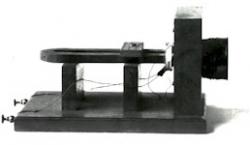
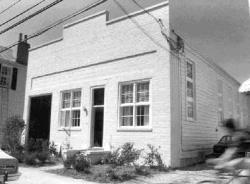
The United States Electric Illuminating Company of Charleston started up South Carolina's first central station for incandescent lighting in October 1882 -- only one month after Thomas Edison opened his famous Pearl Street plant in New York City. In the following years, the company's parent firm was a major force in the growing electrical industry.
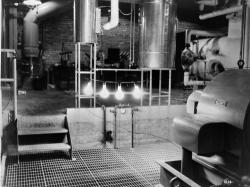
At this facility on 20 December 1951 electricity was first generated from the heat produced by a sustained nuclear reaction providing steam to a turbine generator. This event inaugurated the nuclear power industry in the United States. On 4 June 1953 EBR-I provided the first proof of "breeding" capability, producing one atom of nuclear fuel for each atom burned, and later produced electricity using a plutonium core reactor.
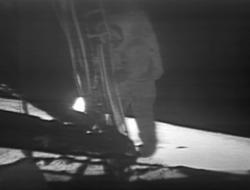
The demonstrated success in space flight is the result of electronic technology developed at Cape Canaveral, the J. F. Kennedy Space Center, and other sites. A wide variety of advances in radar tracking, data telemetry, instrumentation, space-to-ground communications, on-board guidance, and real-time computation were employed to support the U.S. space program. These and other electronic developments provided infrastructure necessary for the successful landing of men on the moon in July 1969 and their safe return to earth.
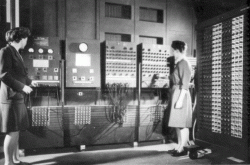
A major advance in the history of computing occurred at the University of Pennsylvania in 1946 when engineers put the Electronic Numerical Integrator and Computer (ENIAC) into operation. Designed and constructed at the Moore School of Electrical Engineering under a U. S. Army contract during World War II, the ENIAC established the practicality of large scale, electronic digital computers and strongly influenced the development of the modern, stored-program, general-purpose computer.
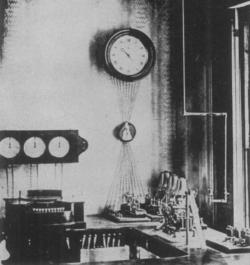
On 28 April 1852 the first municipal electric fire alarm system using call boxes with automatic signaling to indicate the location of a fire was placed into operation in Boston. Invented by William Channing and Moses Farmer, this system was highly successful in reducing property loss and deaths due to fire and was subsequently adopted throughout the United States and in Canada.
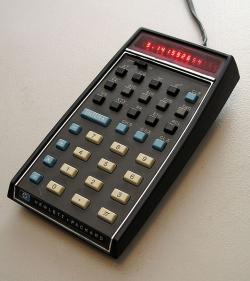
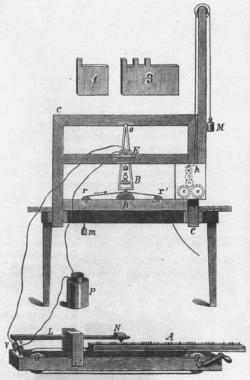
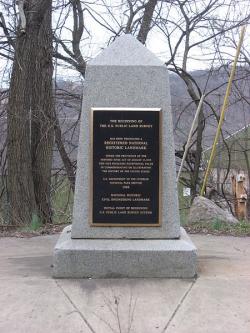
The "Land Ordinance of 1785" required that U.S. lands in the public domain be surveyed before sale, and that the surveys be made in accordance with a consistent, integrated system of lines grid-oriented to a true meridian (north-south reference line) and base line (east-west reference line), subdividing the land into approximately square parcels, called townships.
Thomas Hutchins, the first Geographer of the United States, drove his stake near East Liverpool, Ohio to mark the Point of Beginning of the Geographer's Line, the first westward base line.
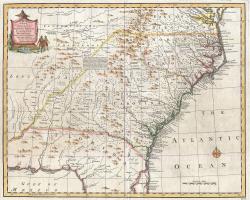
The Royal Colonial Boundary of 1665 was decreed by England's King Charles II to demarcate his American colonies. It provided a survey from the Atlantic Ocean to the Mississippi River along 36 degrees, 30 minutes north latitude. The boundary now serves to divide Virginia from North Carolina and Kentucky from Tennessee.
Innovations
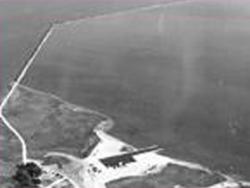
In 1794, the Delaware legislature authorized a lottery to fund the erection of ice piers in the harbor at New Castle. The ice harbor was designed to protect anchored ships from storms and ice. At the time, New Castle served as the principal winter port for ships from the Port of Philadelphia…
Read More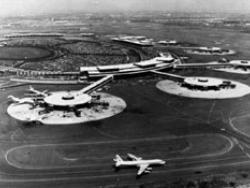
In May 1927, the same month of Charles A. Lindbergh's famous transatlantic flight from New York to Paris, a fact-finding commission appointed by the U.S. Secretary of Commerce concluded that Newark would be the ideal location for an airfield to serve the greater New York/New Jersey metropolitan…
Read More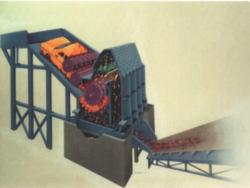
This machine, designed by Alton S. Newell, efficiently reduced automobile bodies into scrap metal for recycling. A body was fed into the shredder at a controlled rate, and rotating hammers, driven by a 500-hp motor, shredded it into small pieces that were easily shipped. The process took about…
Read More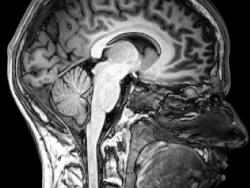
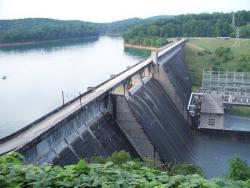
Norris Dam impounds the Clinch River, a mountain tributary of the Tennessee River. The facility stands as a tribute and symbol of the birth of the Tennessee Valley Authority (TVA). Given broad jurisdiction over resource development in the watershed (a 40,000-square-mile basin comprising parts of…
Read More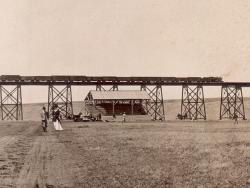
The Northern Pacific High Line Bridge No. 64, built between 1907 and 1908, has continued to perform yeoman service in the uninterrupted flow of the Nation's commerce. Nearly, 100 years after this bridge officially opened, it still carries 125-ton car unit coal trains, double stack container…
Read More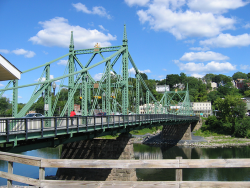
The crossing of the Delaware River at Easton, Pennsylvania, provided a central link in travel from the northeastern seaboard to America's inland territories throughout the 18th and early 19th centuries. From 1806 to the mid-1890s, travelers used a landmark wooden structure built by noted bridge-…
Read More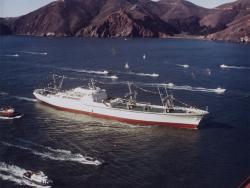
The N.S. Savannah was the first nuclear-powered cargo-passenger ship, built by the New York Shipbuilding Corporation at Camden, New Jersey. The 74 maximum-power thermal megawatt pressurized-water reactor was supplied by the Babcock & Wilcox Company. Nearly 600 feet long with 22,000-tons…
Read More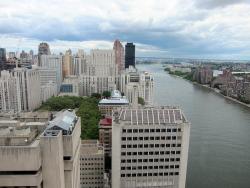
For more than a century, scientists at Rockefeller University have enhanced our understanding of the molecular basis of life — specifically the relationship between the structure and function of nucleic acids and proteins. They showed that DNA transfers genetic information and that the sugars…
Read More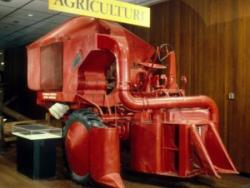
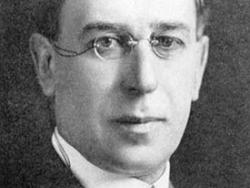
In 1900, Moses Gomberg, Professor of Chemistry at the University of Michigan, confirmed the existence of a stable, trivalent organic free radical: triphenylmethyl. In so doing, he challenged the then prevailing belief that carbon could have only four chemical bonds. Gomberg’s discovery made a…
Read More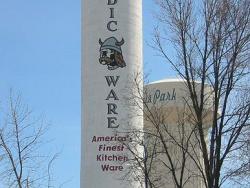
No image dominates the Midwestern landscape like the monolithic grain elevator, whose present shape and construction owe much to grain company operator Frank Peavy and architect-builder Charles Haglin.
Wanting to improve on the flammability and cost of traditional wood-cribbed…
Read More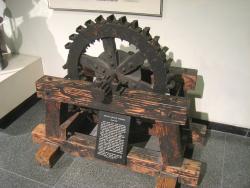
Water wheels have been used to power mills and pumps for centuries. However, the traditional water wheel was inefficient: water hitting a bucket would splash back against the next bucket, slowing the wheel. This is especially true when water is delivered to the buckets under very high pressure…
Read More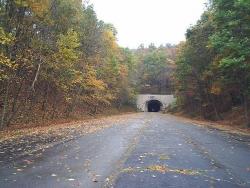
The Pennsylvania Turnpike was the first American paved highway of the automobile era in which tolls alone were expected to pay all project costs. The 160-mile roadway, which cut an east-west path from Pittsburgh to the state capital of Harrisburg, was considered a revolutionary example of…
Read More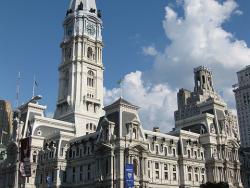
Philadelphia City Hall was the largest masonry load-bearing wall building in the world at the time of its completion in 1901, stood as the tallest occupied building in the United States until 1909, and still is the largest city hall in the United States. The building covers 14.26 acres,…
Read More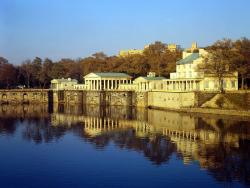
After an initial difficulty in attracting customers (who were used to getting their water from public pumps and private wells and cisterns), Philadelphia's waterworks soon couldn't keep up with demand. John Davis and Frederick Graff designed a complete remodeling of the system in 1811 so that it…
Read More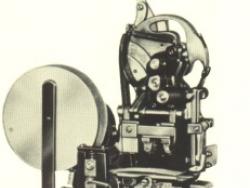
This was the first successful machine for mechanizing the identification and price marking of retail merchandise. At a single stroke of the operating handle, the machine formed a tag from a roll of stock, imprinted it with price and other information, formed a wire staple, and stapled the tag to…
Read More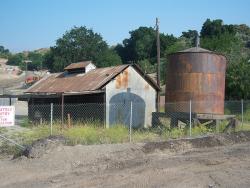
The economic situation in the whale oil business (for lighting), coupled with the increased demand for lubricants, stimulated growth in the U.S. petroleum industry. The drilling of the heavy, sulfurous, and asphaltic California crude began in the 1870s at the Pico Canyon area, using the…
Read More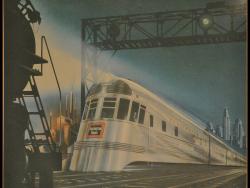
In the late 1920s, the automobile cut railroad passenger service by more than half. The debut of the Pioneer Zephyr heralded a comeback in 1934, touring the country and being seen by some two million people in 222 cities.
The Zephyr was the first diesel-powered, stainless-steel…
Read More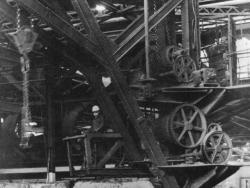
Used to lift molten iron to molds where it was cast into pipe, jib cranes were the sole means of conveyance in the pit-casting process. When pit casting was replaced by centrifugal casting in the 1920s, many pits were filled and the cranes were used to produce cast iron fittings or general…
Read More

